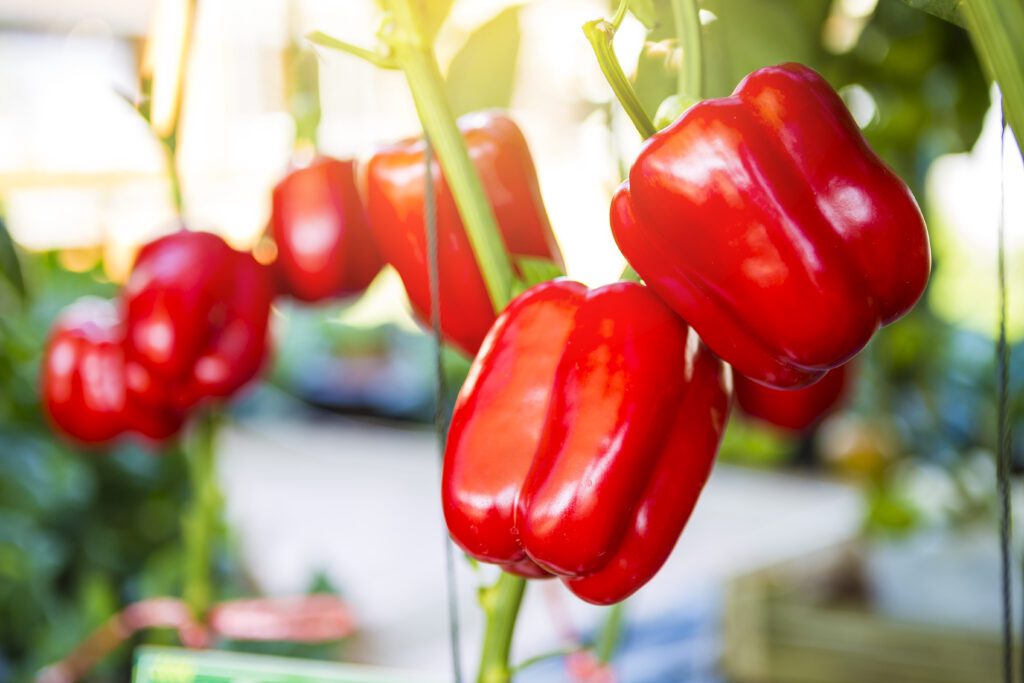by RYAN MILEJCZAK
Sponsored by Farm Credit of Central Florida
When it comes to Florida agriculture, it’s our fruit that gets most of the attention, including our world famous citrus, as well as other fruits like strawberries and blueberries. But what isn’t as well known is we’re a major producer of veggies as well, including sweet corn and tomatoes. One particular veggie is well worth highlighting: bell peppers.
While bell pepper can be grown year round in Florida, peak bell pepper season runs from October through June. Florida has long been one of the largest producers of bell peppers in the nation, historically second only to California. However, in 2022, Florida saw its bell pepper production overtake California’s, producing 38.4% of the nation’s bell peppers versus 33.9% for California. The 2022 growing season saw Florida produce more than $262 million in bell peppers with over 10,000 acres dedicated to bell pepper production, and this upward trend will likely continue over future growing seasons.
While culinarily considered a vegetable because of their use in primarily savory dishes, bell peppers are botanically a fruit, just like other culinary vegetables like tomatoes, to which bell peppers are distantly related. Both are in the nightshade family Solanaceae, which also includes eggplants, and potatoes.
Peppers specifically are in the genus Capsicum, which are native to the Americas. A variety of Capsicum species are cultivated, but the most common culinary peppers are varieties of Capsicum annum, including bell peppers, jalapeño peppers, cayenne peppers, and more.
Most species of peppers are spicy due to the presence of the chemical capsaicin, which interacts with pain receptors in the body to produce a sensation of heat and pain. Spiciness, often referred to as “piquancy” or “pungency” by scientists, is measured using the Scoville Scale. A typical jalapeño pepper has around 4,000 to 8,000 Scoville Heat Units (SHU), while the spiciest pepper recorded has over 2 million SHU.
Bell peppers, meanwhile, have 0 SHU. They were first developed in Hungary in the 1920s, and have become a popular vegetable for salads, stir fries, and more. Bell peppers are also often used to make paprika.
Bell peppers come in a variety of colors. The most common are yellow, orange, red, and green, with green peppers actually being less ripe versions of other colored peppers which are picked earlier. When fully ripe, the peppers become sweeter, creating the difference of flavor between green peppers and other colors. Less common colors include brown, purple, white, and more.
Whether green, red, or any other color, peppers are a great part of a healthy diet. Because they’re mostly water, they’re extremely low in calories, while providing nutrients like fiber, beta-carotene, and Vitamin C. In fact, a ripe bell pepper can have as much as three times as much vitamin C as an orange, making it one of the best sources of this essential nutrient. Their nutrient profile also makes them an excellent choice for diabetics, and may help regulate blood sugar levels in those with Type 2 Diabetes.
If you want to grow your own bell peppers in Florida, good news: they’re easy to grow and extremely well suited to the Florida climate. They do best with full sun in well-drained, fertile soil with a soil pH of about 6.5. They can be harvested about 80 to 100 days after planting, and you can choose to pick them while still green or once fully ripened.
Whether you grow your own or get them from Florida’s hard working farmers, whether you eat them raw, sauteed, or pickled, there’s no denying it: Bell peppers are one of Florida’s best crops.

